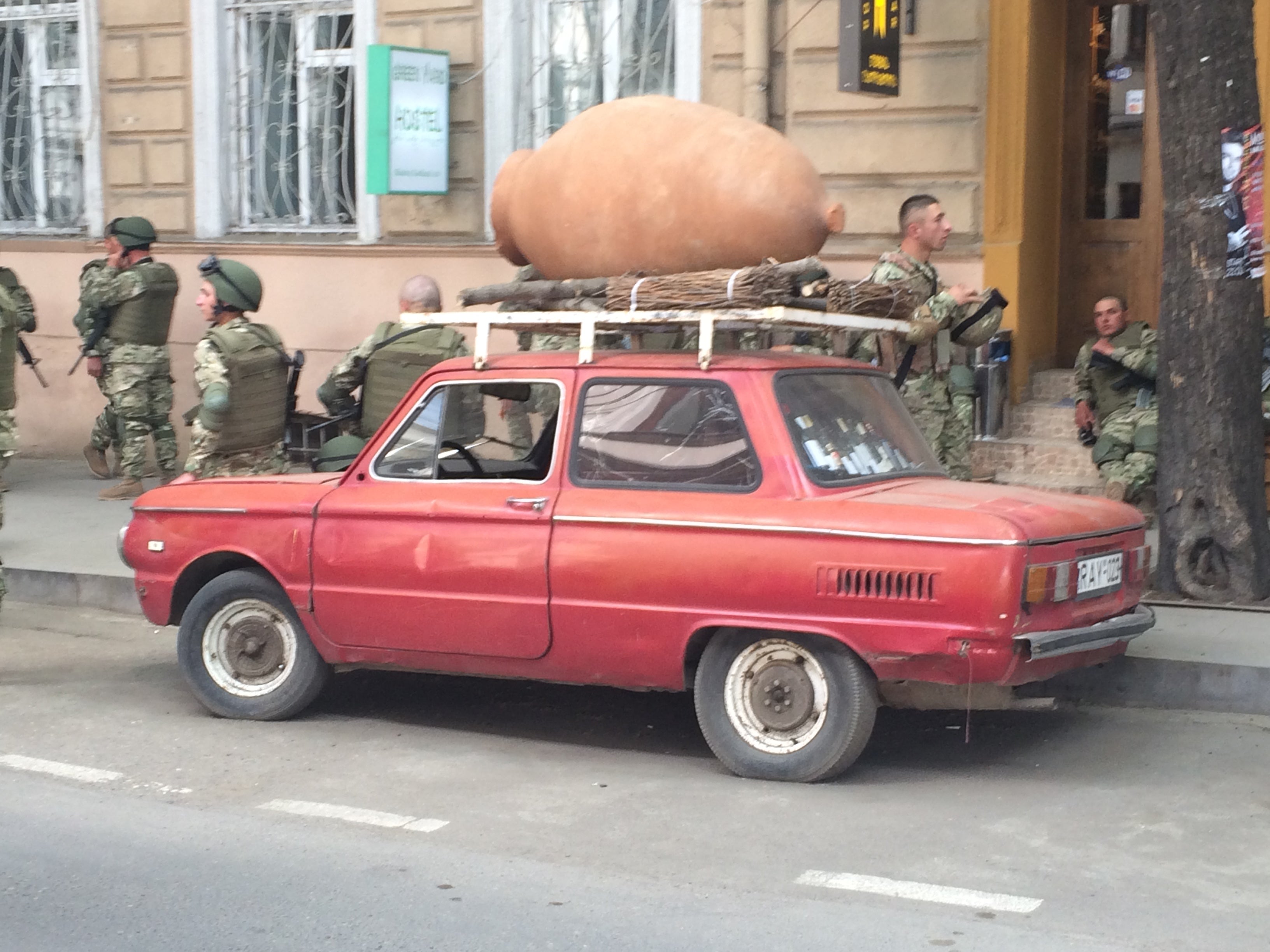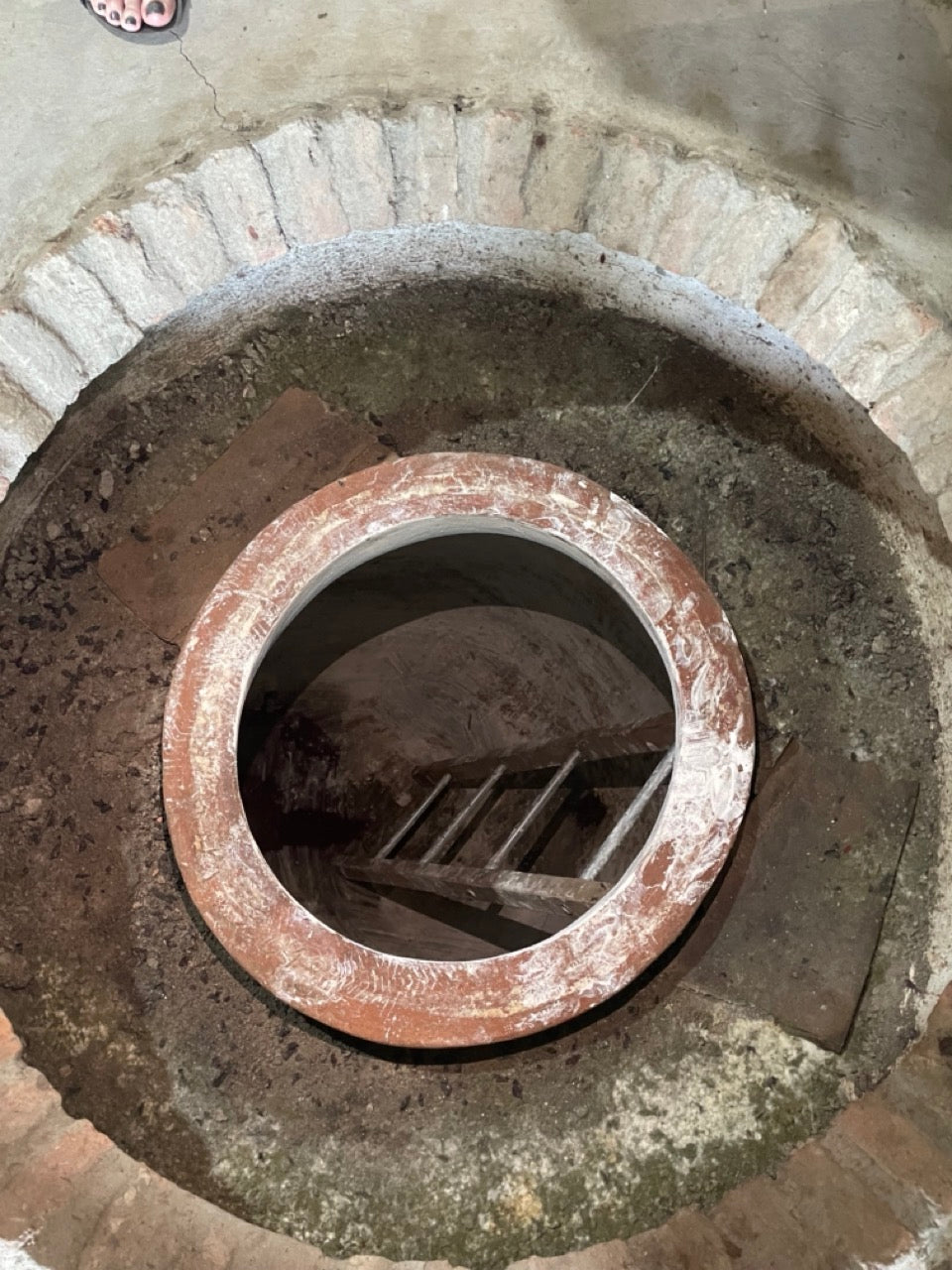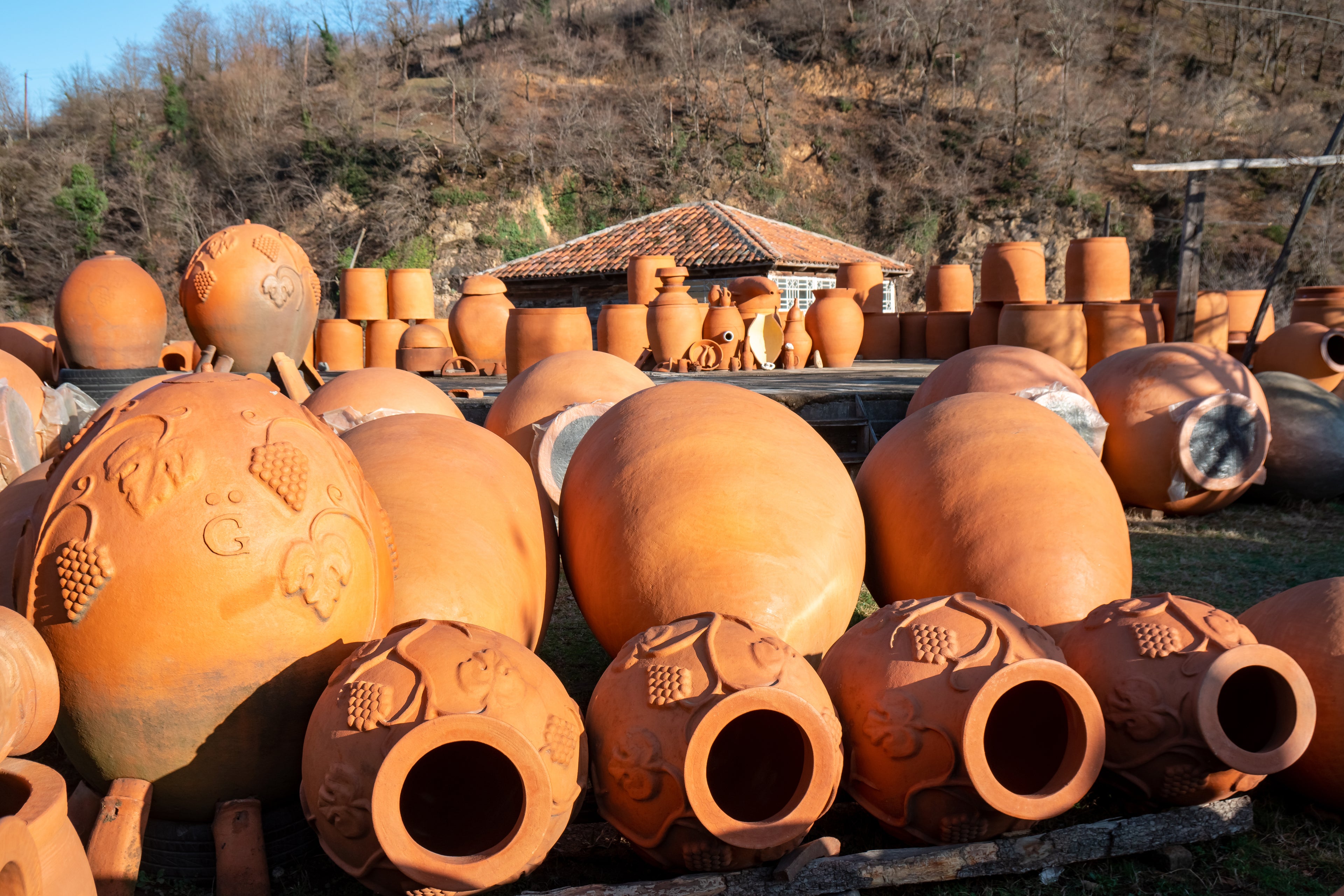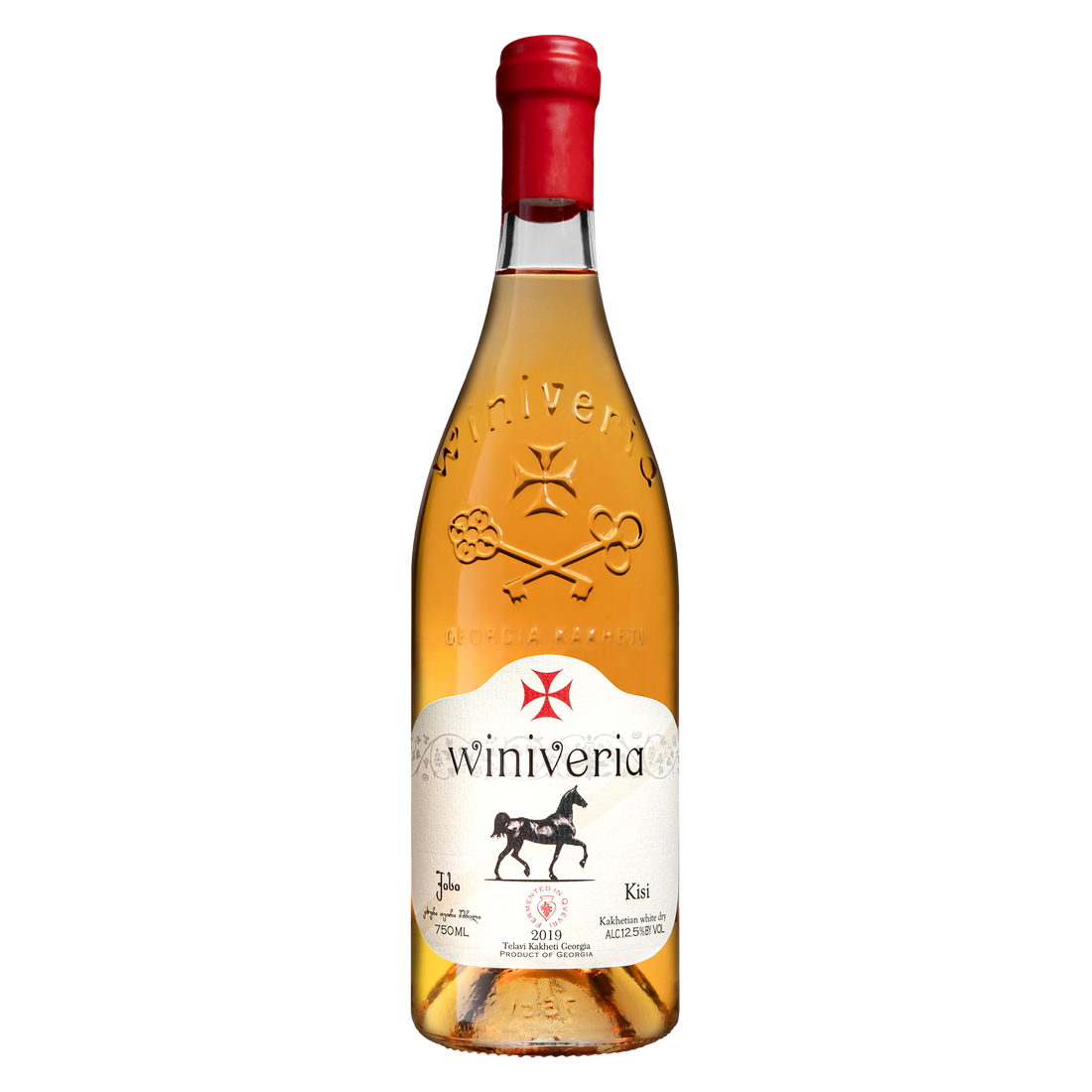You can’t talk about Georgian wine without talking about qvevri.
Pronounced “kveh-vree” and also spelled as kvevri (or called ch'uri in Western Georgia), these giant clay vessels have become all the recent rage in hip natural winemaking circles around the world… but they originated right here in Georgia, where they’ve been used to make fresh, sound, natural wine for over 8,000 years.
What do qvevri wines taste like?
Well… delicious: Savory, structured, grounded, characterful. Dense with dried fruit, herbal notes and soft earth tones. Enchanting, ineffable and deeply familiar all at once.
Since wines made in qvevri are usually also made with skin-contact fermentation, they contain a higher percentage of antioxidants and polyphenols, both of which are beneficial to health.
-
Amber (orange or skin-contact whites)
Shop Amber WinesQvevri wines from white grapes like Kisi, Rkatsiteli or Mtsvane emerge more golden, amber or orange in color with gently gripping tannins. Think dried apricot, mango, pineapple and golden raisin intermingling with savory and spiced turmeric, toasted walnut, chamomile, terra cotta and coriander.
-
Red
Shop Red WinesRed qvevri wines made from grapes like Saperavi are fascinatingly deep in color and character while still lifted and fresh. Think of the juiciest blood orange, pomegranate, black cherry or cassis squeezed over smoked bay leaf, black peppercorn, spicy licorice and a hint of worn leather and tobacco.


How big are qvevri?
Technically, they could be any size from roughly a 20-liter capacity and up, but the most common modern qvevri are around 1,000 to 1,200 liters (a size that Master of Wine and Georgian wine author extraordinaire Lisa Granik calls the “sweet spot for fermentation”). To help you better visualize, imagine a giant clay pot roughly four to eight feet tall by three to six feet wide. Indeed, they’re big enough for grown Georgian men and women winemakers to stand up in… or, more specifically, to climb down into…


Wait. Climb into?
Yep. Qvevri are traditionally buried in the ground (unlike Greek or Roman amphora, which are smaller and used more for wine transport), so their open tops sit flush with the floor. This is because the cool underground acts as a natural, stable temperature control, ensuring a steady fermentation.
Most Georgian wine cellars (marani) are actually built around qvevri: the qvevri first get moved oh-so-carefully into position and propped in place with bars and rods before the cellar is filled in around them with dirt, rocks or poured concrete that comes up to the qvevri necks. This means the qvevri do not move after their installation within the winery, and in order to clean or repair them, Georgian winemakers typically use thin wooden ladders that they drop into the qvevri so they can climb down into them to clean, repair small cracks, or to scoop out wine lees post-fermentation.
How does winemaking in qvevri work?
Back, back, back in the ancient day
Before anyone understood the science of fermentation, winemakers only knew that the combination of grape juice and time magically yielded a beautiful, intoxicating beverage. Without modern technology like wine presses or destemmers or temperature-controlled tanks, folks would simply dump their harvested grapes — skins and seeds and stems and all — into a vessel in which the magic could happen. In Georgia, where the oldest qvevri found anywhere in the world have been carbon-dated back to around 6,000 BC, entire clusters of grapes (regardless of their skin color) were simply shoveled into these clay vessels and sealed shut with beeswax for months on end. If they opened the qvevri and saw the must or lees on the top, or saw bubbles or movement in the liquid, they knew the magic of fermentation had not yet completed. When the liquid at the top was clear, however, and all the sediment had dropped naturally to the bottom of the qvevri, the artisans knew they could safely siphon their precious liquid off the top.
In a “modern” Georgian wine cellar
Today, the general process of traditional winemaking in qvevri remains essentially the same: add grape clusters, berries, or just juice (depending on preference); cover and seal with beeswax; wait for six to 12 months. Inside, the “magic” of fermentation creates a natural convection due to the egg-shape of the qvevri, circulating the wine and drawing tannins and pigment out of any grape skins, seeds and stems. This is why most qvevri-made wines are rich in color and tannins — natural preservatives that keep the wine fresh and sound without any additives.
When the native yeasts that were on the grapes have carried out the natural fermentation, their spent cells or “lees” drop to the slightly pointed bottom of the qvevri, layered over the heavier seeds and skins and stems. With time, all of the sediment completely settles in layers in the base of the qvevri, and the pure, finished wine can be drawn off without fining or filtering.
The winemaker then scoops out the sediment, scrubs the qvevri clean using a special brush, and sanitizes it with a limestone and water solution to keep it pristine until the next harvest arrives. Qvevri, then, are an exceedingly sustainable vessel, as they can be literally reused for hundreds of years.






